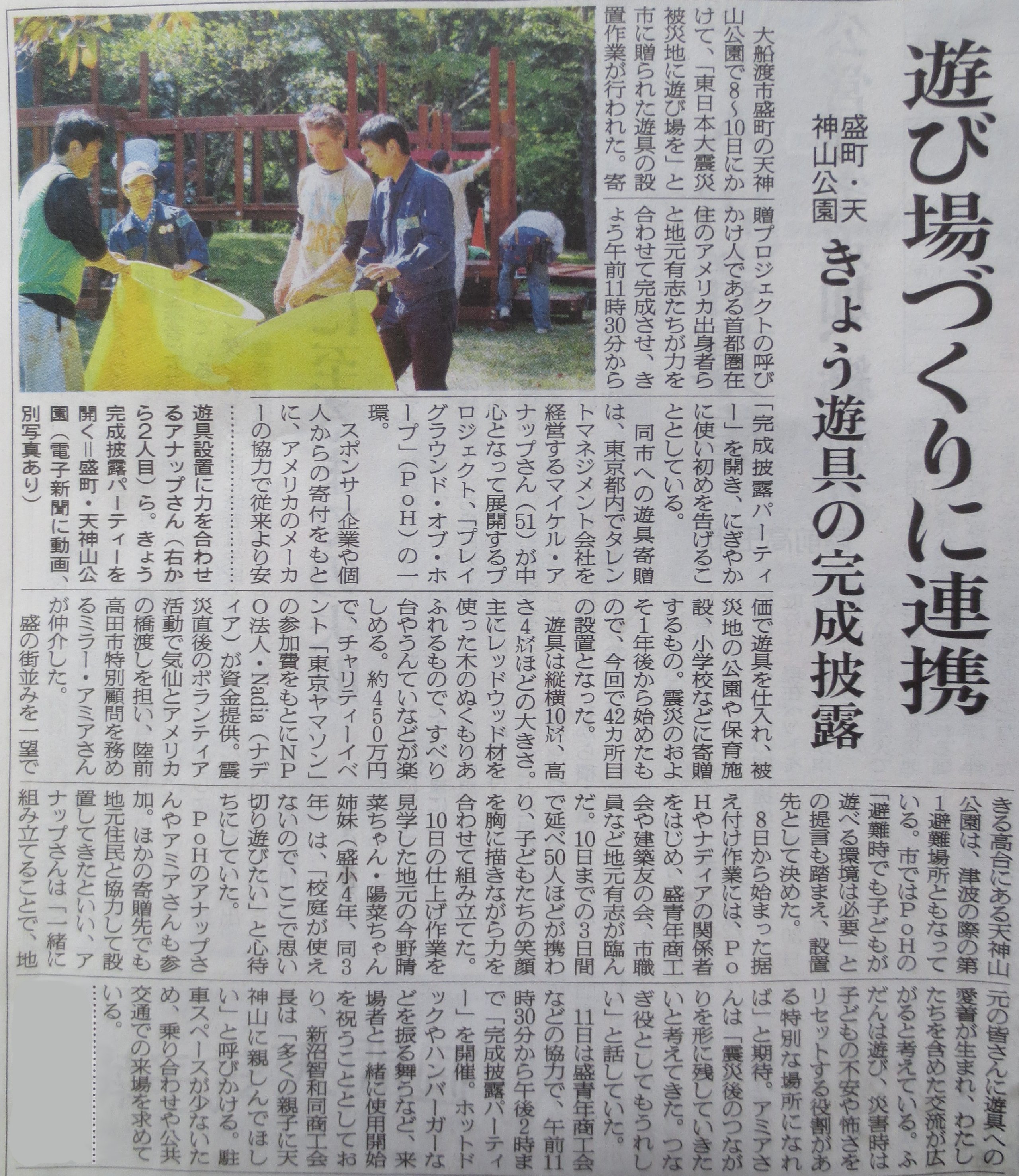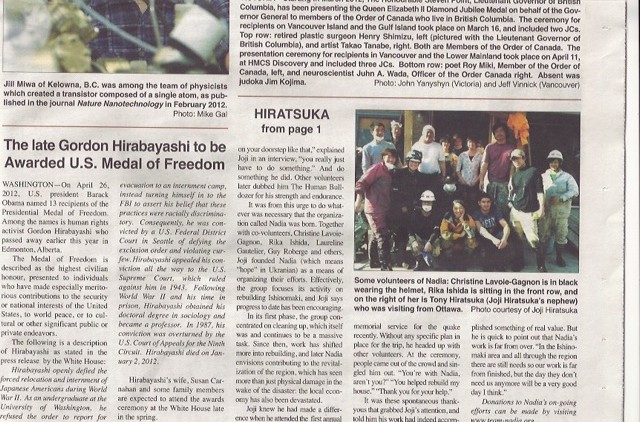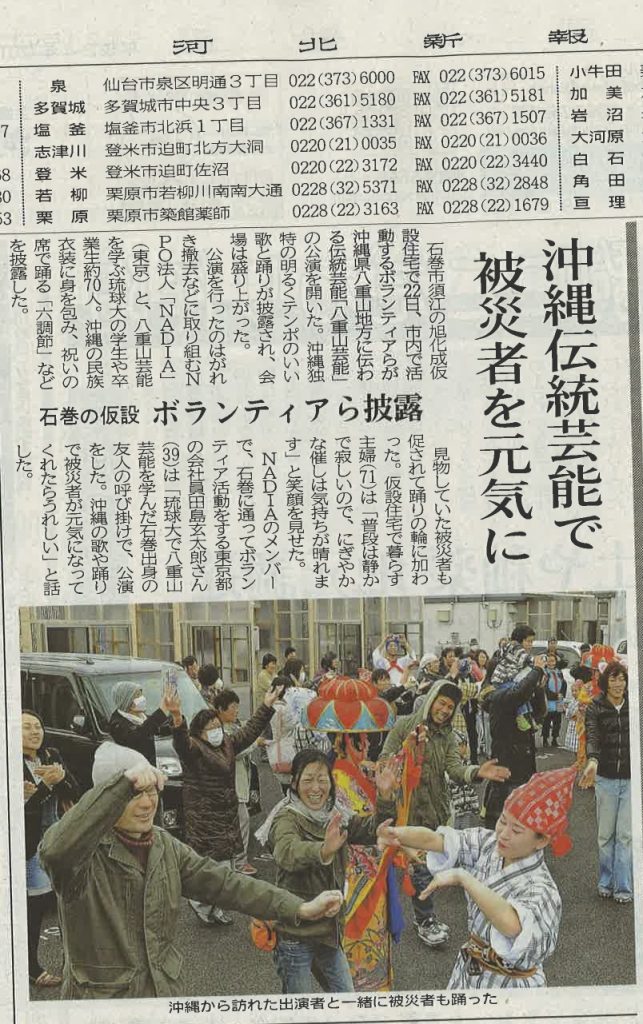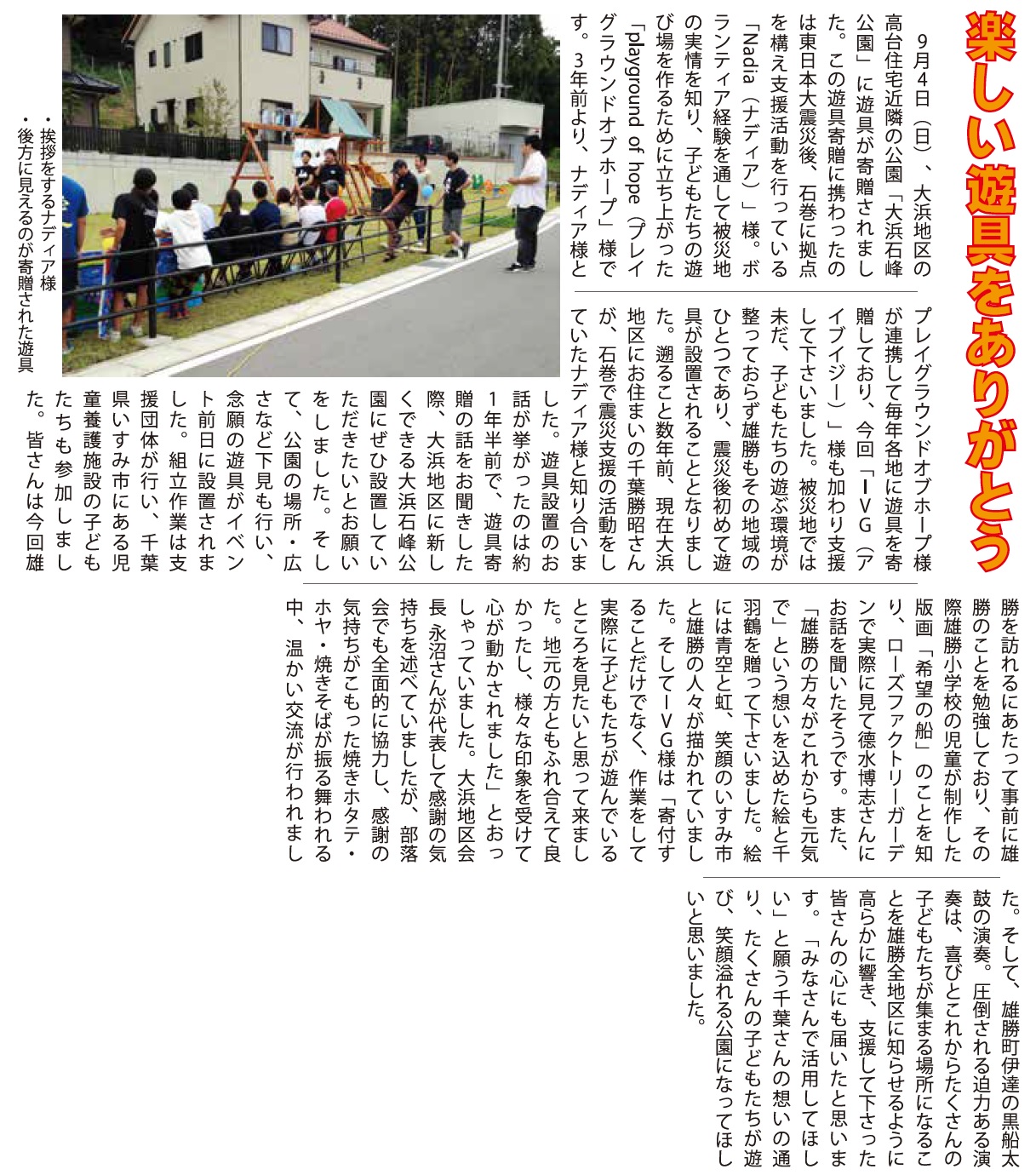
カテゴリー: メディア
岩手県大船渡にてプレイグラウンド設置
Article: Kanto-Tohoku Football Cup Connects Communities
An article was published in the Tokyo Weekender about the recent kids soccer tournament. Please read here:
Kanto-Tohoku Football Cup Connects Communities
Nadia Press Release on “Nadia International Soccer Friendly Cup”
本イベントは、地震の直接的な被害を受けた地域である岩手、宮城、福島への継続的な支援の一環として行われるもので、東北在住の子どもたち、東京在住の子どもたち、海外から日本に来ている子どもたちの交流を目的としています。2日間にわたりサッカートーナメントやアクティビティを共に体験することは、東京の子どもたちやインターナショナルコミュニティの子どもたちにとって、東日本大震災の直接被害を受けた地域や人々に対する意識を高めることにもつながると考えています。
Please read here…
nadia が石巻の駅伝をサポート!
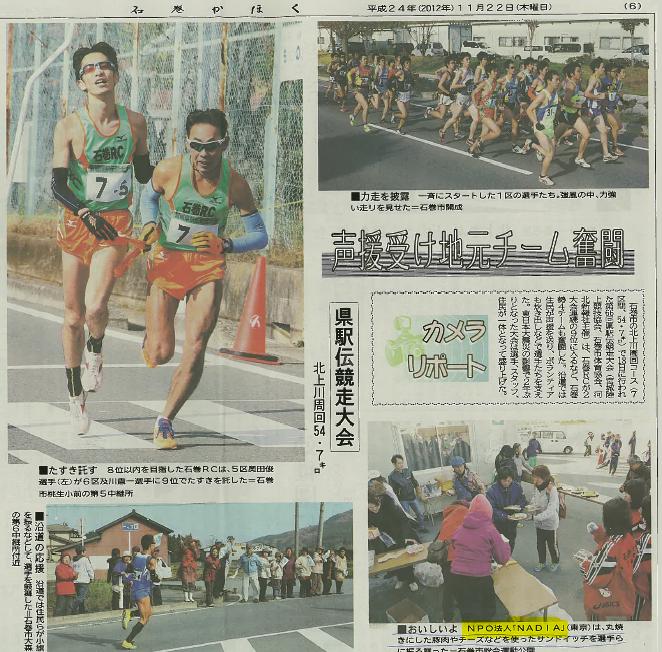
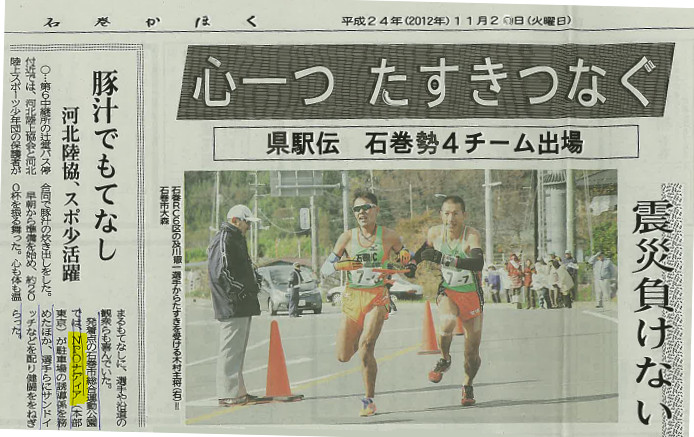
Article in Canadian newspaper Nikkei Voice
Okinawa meets Ishinomaki – April 21-22, 2012
琉球大学の八重山芸能研究会の卒業生および現役の学生,さらにその方々の友人が集まり,吉野町の一皇子神社および関ノ入の旭化成仮設住宅にて八重山舞踊,沖縄舞踊,沖縄料理の炊き出しや子供達によるあだん細工のイベントを行いました。現地の方々も大いに喜んで下さり,みんなで踊り,食事も楽しみました。
タイの方々のタイマッサージも好評で,行列が出来るほど。沖縄の音楽の後のタイ音楽もまた見事なコントラストで,聞く者の心を和ませてくれました。
NADIAのメンバーは得意の豚の丸焼きを始めとする炊き出しの準備をサポートし,また,遠くは沖縄から駆けつけてくれた方々のために,会場設備や,宿泊・バスの手配などのロジスティックなサポートも行いました。
この企画が私達を含め,参加された全員の新たな明日への関係につながったと信じています。
この企画を通して新たな出会いがありました。参加して下さった皆様および遠方から準備や寄付金という形で支援をして下さった全ての皆様に心より御礼申し上げます。
Kahoku Shimpo – NADIA brings Okinawa to Ishinomaki (JP)
NADIA in Tokyo Weekender
As the one-year anniversary of the earthquake and tsunami that devastated northern Japan approaches, the nation is looking back and thinking ahead.
How has Tohoku recovered since the disaster, and what can we expect in the year to come?
Situation in Tohoku:
Up north, much of the tsunami debris had been cleared away and many roads have been rebuilt. However, tens of thousands of survivors who lost their homes in the disaster are still living in temporary housing.
Although basic infrastructure has been restored in Tohoku, communities are still struggling.
Many who lost their jobs when the disaster destroyed businesses, agriculture and fisheries industries, have not yet found new employment.
Communities are surviving on aid and government assistance and struggling to rebuild both economically and socially.
The Fukushima Daiichi nuclear reactor achieved cold shutdown in December of last year. Now that there is no more new radiation spewing into the atmosphere, efforts are focused on cleaning up the radioactive contamination that occurred over the last ten months.
Power shortages:
Power is still in short supply in Japan. Most of Japan’s nuclear power plants were shut down for safety checks or maintenance after the 3/11 disaster.
As of this week, only two of Japan’s 54 nuclear reactors were online.
Before 3/11, Japan relied on nuclear power for 30 percent of its electricity needs, so the post-disaster reduction in nuclear power is straining Japan’s energy grid.
However, trade minister Yukio Edano promised last month that Japan will be able to get through the summer without the rolling blackouts or mandatory power cuts it imposed last year.
Although there will be no scheduled or mandatory power cuts, expect to see ‘setsuden’ power conservation efforts continue through 2012: dim lights, weak air conditioning and posters everywhere reminding you to save power.
Food safety:
When the Fukushima Daiichi reactors melted down, they released radioactive iodine and cesium isotopes into the atmosphere.
Although iodine isotopes with their eight-day half-lives are no longer a concern, radioactive cesium still poses a food contamination risk.
The Japanese government is testing food produced in affected areas for radioactive contamination, and the Health Ministry has just set new, extremely strict limits on cesium in food, especially baby food. The new restrictions take effect in April.
However, since food safety inspectors can’t test every vegetable or grain of rice coming out of Fukushima, there is still a very small risk that food from the region may contain radioactive cesium.
Volunteering in Tohoku:
Even though the rubble is cleared and basic infrastructure restored in Tohoku, volunteers are always welcome.
For those foreigners who are not specialized in construction there are still ways to contribute.
Tohoku disaster relief agencies are looking for volunteers who can offer social support to disaster survivors.
Elderly residents in temporary housing need people to talk to, displaced children need tutoring help to keep up with their schoolwork, and many survivors just need to see a friendly face as they rebuild their lives.
Most relief efforts are now being coordinated by prefectural disaster recovery centers, so if you are interested in helping out, contact prefectural offices.
Some agencies such as ‘Team Nadia’ are looking for volunteers to help clean damaged houses over weekends, a popular activity amongst busy Tokyoites and especially recommended if you have not been up there and can spare a weekend.
Finally, if you are too busy to physically be in Tohoku there is always the convenient option of donating directly to Tohoku residents through the Japan Red Cross and organizations like Team Nadia.
(See: www.jrc.or.jp/english/ • team-nadia.jp)
Exodus and return of foreigners:
Immediately after the earthquake, tsunami and nuclear meltdown, there was an exodus of businesses, embassies and residents from Tokyo.
Uncertainty about radiation, food shortages and rolling blackouts drove many out of the Kanto region or out of Japan altogether.
The exact number of foreigners who left Japan because of safety concerns after the quake is hard to determine.
Chiba prefecture just reported its first population decline this month, citing an exodus of about 5,000 foreigners post-disaster as a major cause.
The disaster hit Japan’s tourism industry hard. The number of foreign tourists coming to Japan last year dropped by 28 percent.
Things are off to a better start this year with a boom in Chinese tourists coming over Lunar New Year.

